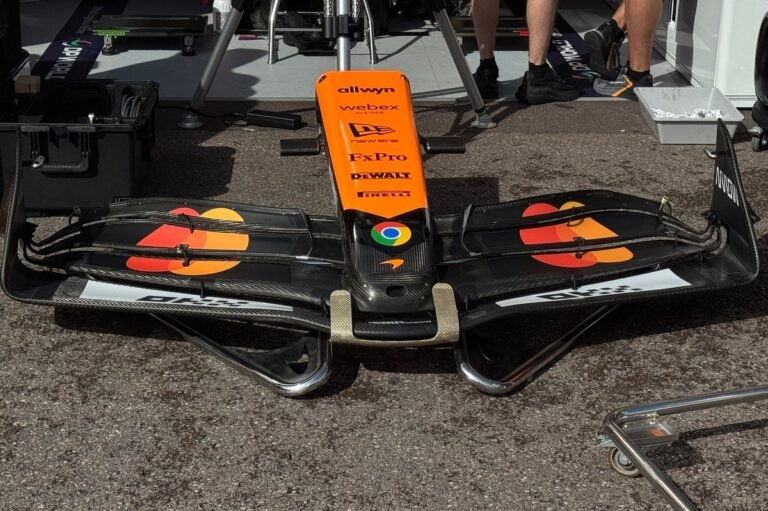FIA Tightens Front Wing Flexibility Regulations Ahead of Spanish Grand Prix
Effective from the upcoming Spanish Grand Prix, the FIA will enforce stricter regulations on the front wing aerodynamics in Formula 1. Under the amended Article 3.15.4, the allowable flex under load for front wings is reduced from 15mm to 10mm. This change reflects the FIA’s ongoing efforts to maintain competitive balance and safety, as well as to counteract innovations that exploit aerodynamics for competitive advantage.
The decision follows a history of teams utilizing aero-elasticity to achieve enhanced performance at high speeds. Flexibility in wing design, while somewhat inevitable due to the forces experienced during racing, has been meticulously controlled to prevent an unfair advantage. Advanced materials technology has enabled teams to manipulate carbon-fiber structures for optimal rigidity and flexibility.
Last season, issues arose regarding McLaren’s rear wing design, which reportedly utilized flex characteristics to reduce drag, termed ‘mini-DRS.’ In response, the FIA implemented enhanced monitoring measures, including onboard cameras during practice sessions, to scrutinize wing flexibility.
The FIA’s adjustments were initially proposed in January but postponed to allow teams to recalibrate their designs. Notably, Red Bull has voiced strong opinions on the need for swift implementation, suggesting the changes should have commenced earlier at the Emilia Romagna Grand Prix.
FIA’s single-seater director, Nikolas Tombazis, emphasized that these regulations are crucial for assuring fairness in competition, stating, “These adjustments refine our ability to monitor and enforce bodywork flexibility regulations.”
The new testing parameters involve applying a static load of 1000 Newtons to both sides of the front wing, with no more than 10mm deflection permitted. Smaller rear flaps will be subjected to a 60-Newton load, allowing a maximum of 3mm flex.
As speculation mounts regarding which teams may have benefitted from previous regulations, McLaren remains in scrutiny, having passed existing tests despite claims from rivals. The unfolding developments underscore the continuous evolution of technical regulations in F1, aiming to level the competitive field.



